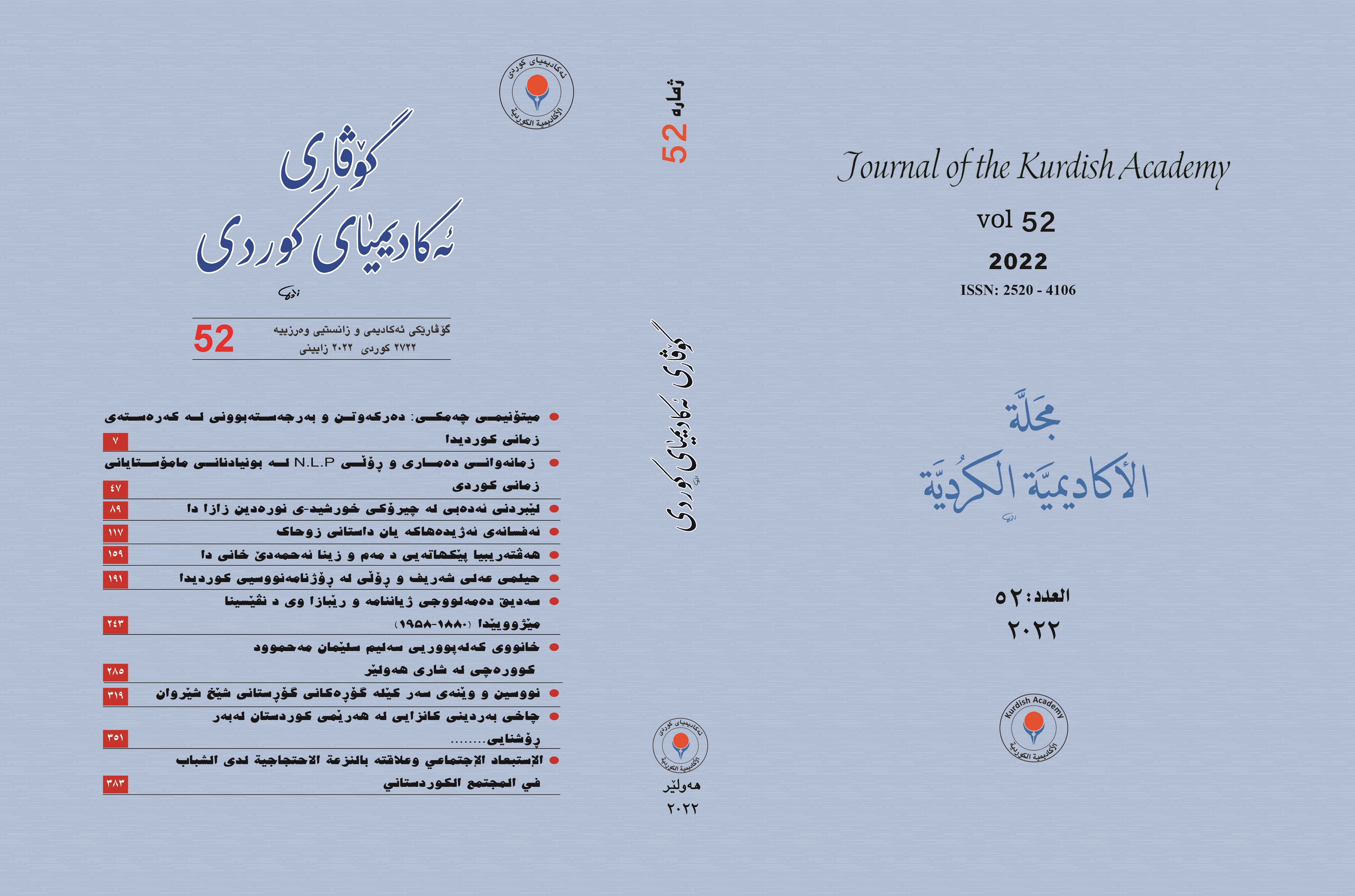هەڤتەریبیا پێكهاتەیی د مەم و زینا ئەحمەدێ خانی دا
DOI:
https://doi.org/10.56422/ka..52.89Keywords:
Rhythm, parallelism, Structural parallelism, Repeations, Ahmed-i KhaniAbstract
Parallelism, as a poetic and rhythmic device in literary text, has been widely used in Kurdish literature. Despite its connection to poetry, the earliest research on this term was related to religious texts. Put it differently, parallelism exist in various discourses in order to add aesthetics to the language and has effects on the readers. Ahmed-i Khani is one of the Kurdish poets that mainly depended on this technique especially in his masterpiece (Men u Zin).
Parallelism played a fundamental role in the aforementioned work and it became an essential device to build its poetic language. This research entitled (The synthetic parallelism in Ahmed-i Knani’s Mem u Zin) aims to specify and analyze the role and the types of synthetic parallelism in the (Mem u zin) of Ahmed-i Khani. The research Consists of two parts, the first part focuses on the theoretical framework, containing short history, terminology, definitions and the typology of parallelism. The second part is a statistic and analytic work on the different types of synthetic parallelism in the abovementioned literary work.





